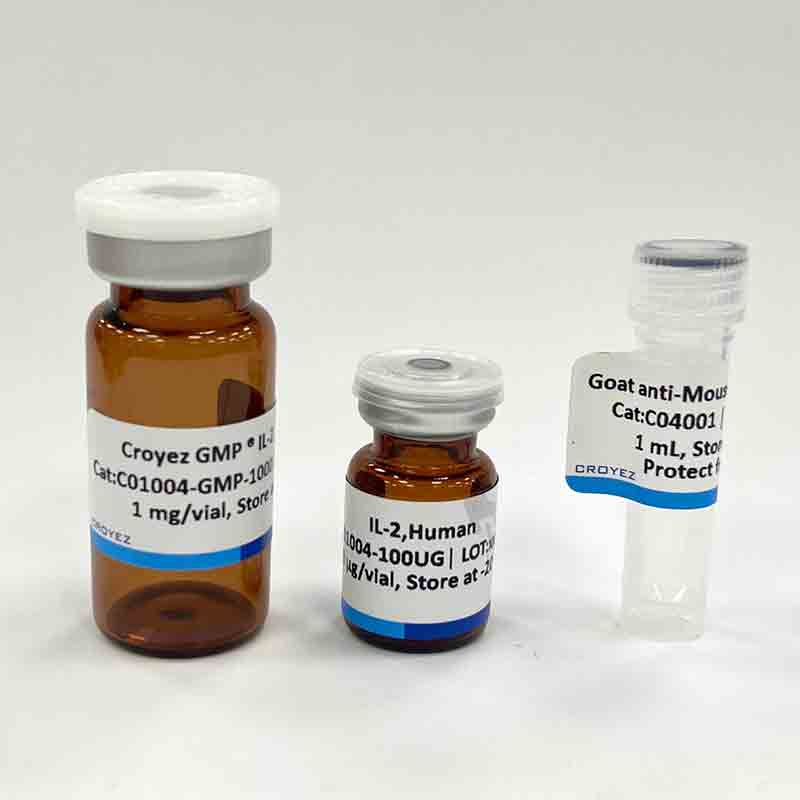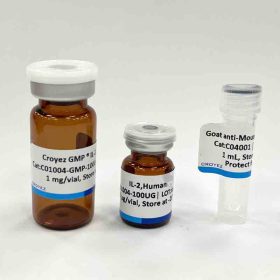OX40L, a member of the TNF superfamily of structurally related proteins, exists primarily as a type II membrane bound, non-covalently linked homotrimeric protein. The OX40L is stably expressed on many antigen-presenting cells, such as activated B cells, mature dendritic cells, Langerhans cells, and macrophages. Interactions between OX40 and OX40L can regulate the division and survival of T cells. Its inhibition effect can make the effector T cells conversing into regulatory T cells (Tregs) and promote the recall response in memory T cells.
Sequence:
QLSSSPAKDPPIQRLRGAVTRCEDGQLFISSYKNEYQTMEVQNNSVVIKCDGLYIIYLKGSFFQEVKIDLHFREDHNPISIPMLNDGRRIVFTVV
ASLAFKDKVYLTVNAPDTLCEHLQINDGELIVVQLTPGYCAPEGSYHSTVNQVPL with polyhistidine tag at the N-terminus
Source:
Escherichia coli
Endotoxin Test:
<0.1 EU per 1 μg of the protein by the LAL method.
Activity:
Measure by its ability to induce IL-2 secretion in mouse T cells in the presence of the anti-CD3 antibody. The ED50 for this effect is <25 ng/mL.
Purity:
>95% as determined by SDS-PAGE. Ni-NTA chromatography
Formulation:
The protein was lyophilized from a solution containing 1X PBS, pH 7.4.
Reconstitution:
It is recommended to reconstitute the lyophilized protein in sterile H2O to a concentration not less than 100 μg/mL and incubate the stock solution for at least 20 min to ensure sufficient re-dissolved.
Storage:
Lyophilized protein should be stored at -20°C. Upon reconstitution, protein aliquots should be stored at -20°C or -80°C.
Note:
Please use within one month after protein reconstitution.





